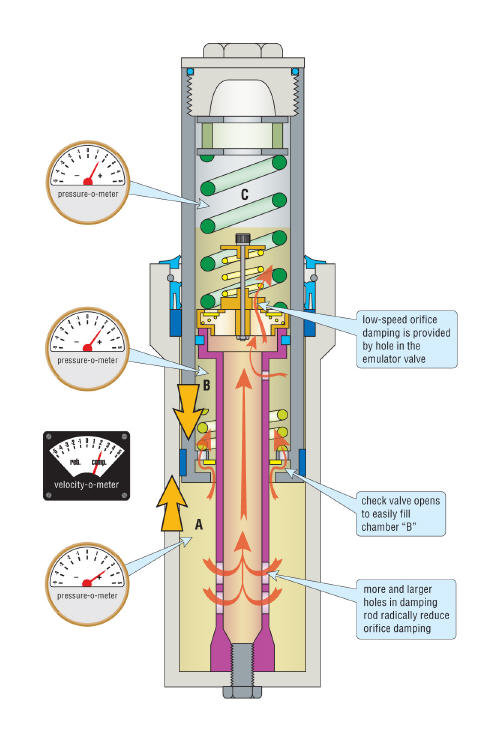Hey guys , has anyone done racetech emulators on there vmax in combination with progressive springs .
I have done my share of for forks , looks like standard drilling out the drill out damping rod and weld up the rebound holes .
Just wondering what spring on the emulator , blue or Yellow and how many turns on the adjuster you were running .
The emulator does the same job progressives do but better. It's designed for straight springs only and I wouldn't combine them with progressives at all.
Here's a detailed break down into the science of it:
http://www.racetech.com/page/title/Emulators-How They Work
Long story short(ish):
There's 2 jobs that suspension is there to do for you. One is the obvious shock absorbing. The second is the not as obvious rebound control.
A big fat ass spring can absorb impact just fine, but without something to control the rebound it's going to bounce just as hard as it was compressed on the way back out. Setting the spring inside a bunch of fork oil smooths out the violence of the rebound, but if it's sitting in oil to begin with it won't compress as fast as it needs to. The damping rod is there to let a bunch of oil splooge up and cover the spring on compression, but drain away on rebound. How much the oil works is controlled by the size of the holes in the bottom and top of the rod, and the viscosity of the oil.
The problem is that fluid dynamics is simple. Whatever amount of force is applied = the amount of oil covering your springs and controlling rebound. As such it will respond the same to a huge bump like crossing a railroad and something a little less violent like a speed bump. Progressive springs are designed to smooth that out. Requiring more force to fully compress due to the gradually tighter winding of the spring. Giving a small response to pebbles and road imperfections, but a massive response to railroad tracks.
Emulators perform the same job, but do so entirely differently (and more effectively). If you want to visualize how they work... figure a 2 liter of soda with the cap on but super loose. A small squeeze of the bottle isn't going to blow that cap off and won't allow the bottle to blow a bunch of soda all over the place, but a good firm squeeze and that cap is going to blow off with a bunch of high speed soda right behind it.
Emulators are the cap and your forks are the 2-liter, adjustable with 3 (?) settings to control how loose they sit on the top of the damping rod before completely blowing off. The analogy falls down a little because the emulator also has a hole in the top of it to allow some oil flow for the smaller bumps, but that's the general idea.
Progressives are designed to minimize the natural effect of rebound the spring is going to want to do, but emulators are designed to completely separate the 2 jobs your suspension needs to worry about. Emulators let the strength of the spring handle the absorbing and viscosity of the oil control the rebound. In traditional damping rod design both the spring and the oil have some unintended impact on both jobs. Progressive springs which are designed to do both jobs are wasted with an emulator setup. Combining them is using 2 different solutions to the same problem at the same time. The result is that neither solution works as well if at all.
:edit:
Have a picture





![Bovemanx Motorcycle Phone Mount Holder, [150mph Wind Anti-Shake][7.2inch Big Phone Friendly] Bike Phone Holder, Motorcycle Handlebar Cell Phone Clamp, Compatible with iPhone 16 Pro Max Smartphones](https://m.media-amazon.com/images/I/51F+1sontPL._SL500_.jpg)







































